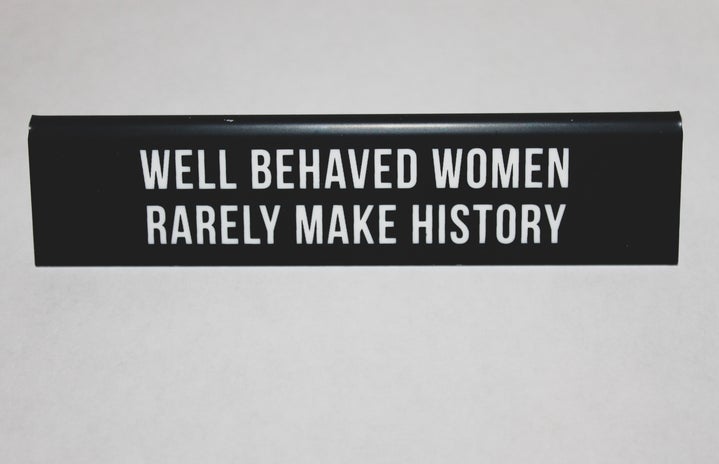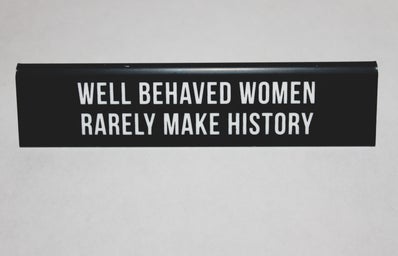I spent part of the past weekend binge watching and catching up on the popular teen drama, “Riverdale,” a CW TV show based on the characters of the well-known Archie Comics series. It is an hour long high school, soap-opera filled with murder mysteries, dark secrets, teen romance, and (of course) strawberry milkshakes. One of the unique aspects of the show is how they were able to revamp these female characters known for their specific archetypes, sexist frenemy tropes, and love triangles. Archie Comics has been around for 75 years, since 1943, so you could guess that it was never a feminist masterpiece.
The main female characters Betty Cooper (Lili Reinhart) and Veronica Lodge (Camilla Mendes) are introduced to you as the typical blonde, girl next door and the spoiled, raven-haired vixen. Once you get the past the tease of the well-known Archie/Betty/Veronica love triangle, you realize the misogynistic worldview of the comic books are thing of the past. Jason Blossom’s murder was the main plot point in Season 1, consisting of Betty, Alice Cooper (Betty’s Mother – Madchen Amick) and Cheryl Blossom (Madeline Petsch) handling the investigation into his death. Betty and Veronica developed a strong female friendship, instead of being pitted against each other constantly, a pretty common trope in TV.
I also noticed that the women are the most interesting and in-depth characters in the show, with wonderful character development transitioning from Season 1 to 2 for both Alice and Cheryl. Both women start out as stereotypes, the controlling mother and the ruthless mean girl, but then the layers start getting peeled away and you discover their pains, backstories, and the journeys to find themselves.
“Riverdale” doesn’t shy away from serious issues either. It has covered topics of slut-shaming, sexual assault, and queerness. In hindsight it seems like a good thing, but that doesn’t mean there aren’t things to be critiqued. In Season 1, Episode 3, the plot revolves around a slut-shaming scandal in the high school. The problems I had with this storyline was the fact that the antagonist/sexual harasser was a young black male. Only furthering the stereotype of young black men being depicted as brutes, sexual aggressors, and criminals. In actuality, data shows that 57% of sexual violence perpetrators are white. When Veronica is slut-shamed she uses the phrase “I’m not a slut” as a defense mechanism. It sends the age old message that being a sexually active is a negative and punishable life choice for women.
They deal with sexual harassment and sexual assault in Season 2 when Veronica’s snooty, douchebag boy-toy from back home, Nick St. Clair (Graham Phillips), comes to visit. He roofies & attempts to rape Cheryl. Veronica and “Josie and the Pussycats” (Ashleigh Murray, Hayley Law, and Asha Bromfield) notice Nick taking Cheryl upstairs. They all then barge into the room and stop the assault from happening. It sends a positive message of women helping women, plus it shows just how much of an epidemic this issue is.
The show’s representation of queer people has been above average, with Kevin Keller (Corey Cott), an openly gay male, and a bisexual relationship between Cheryl and Toni Topaz (Vanessa Morgan). The one downfall of that representation was the faux-lesbian queer baiting scene in the first episode of Season 1 between Betty and Veronica.The mayor of the town is a black female, Sierra McCoy (Robin Givens). In the beginning, this looks like a positive thing. Later in the seasons, though, she is then portrayed as an unlikeable, “bitchy boss” stereotype who is seen as the enemy among the teenagers in the town. This ruins the character of Mayor McCoy. How can people see a black woman leader in a positive way if she is portrayed as the enemy?
As you can see, “Riverdale” is trying really hard to be woke. I wouldn’t consider the TV show a feminist masterpiece, but it definitely has feminist undertones within it. The characterizations of the women have proved to be nuanced enough to carry the messages it wants to make, so maybe it should focus on using that to tell its messages, rather than forcing them to deliver ham-fisted pieces of dialogue.


